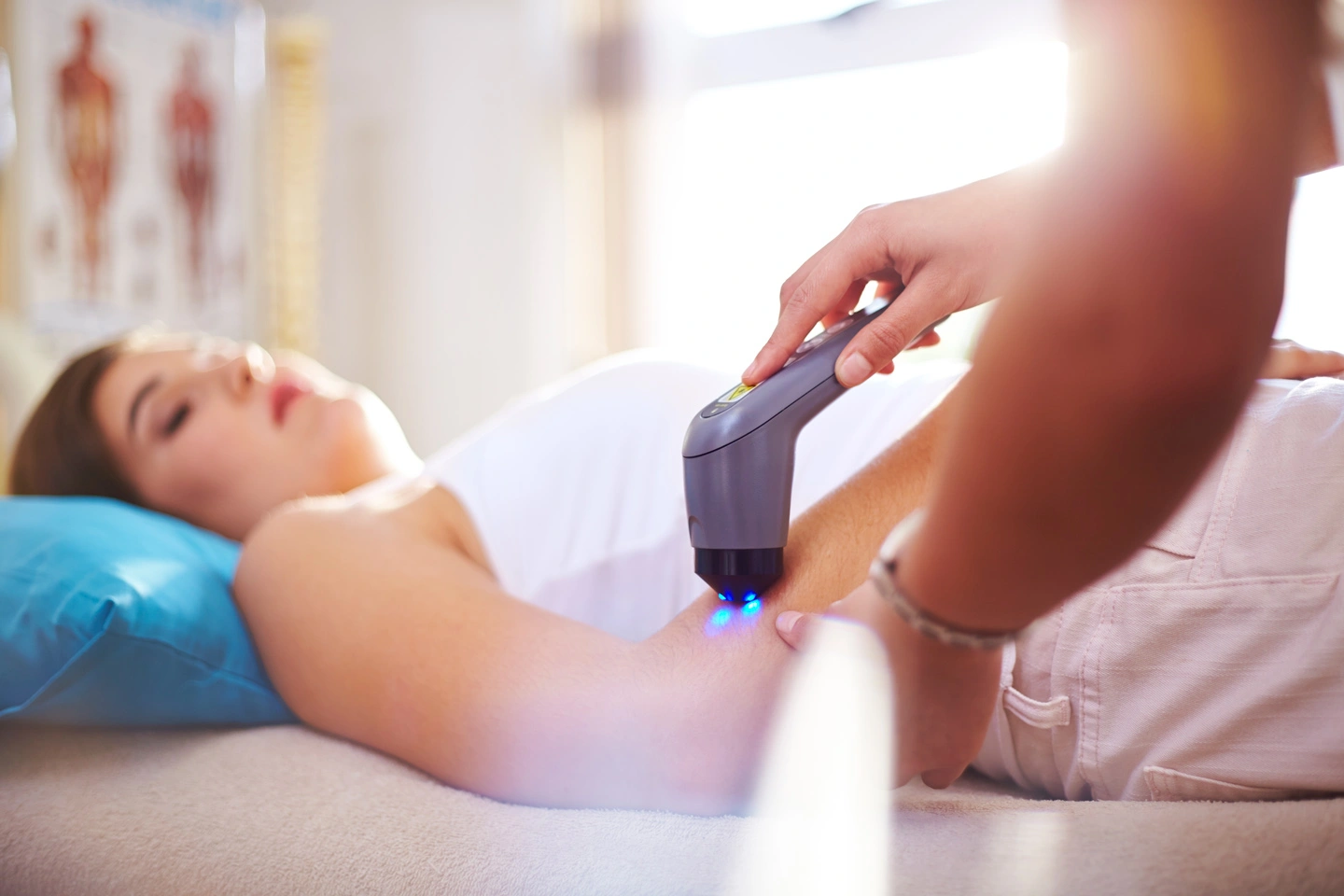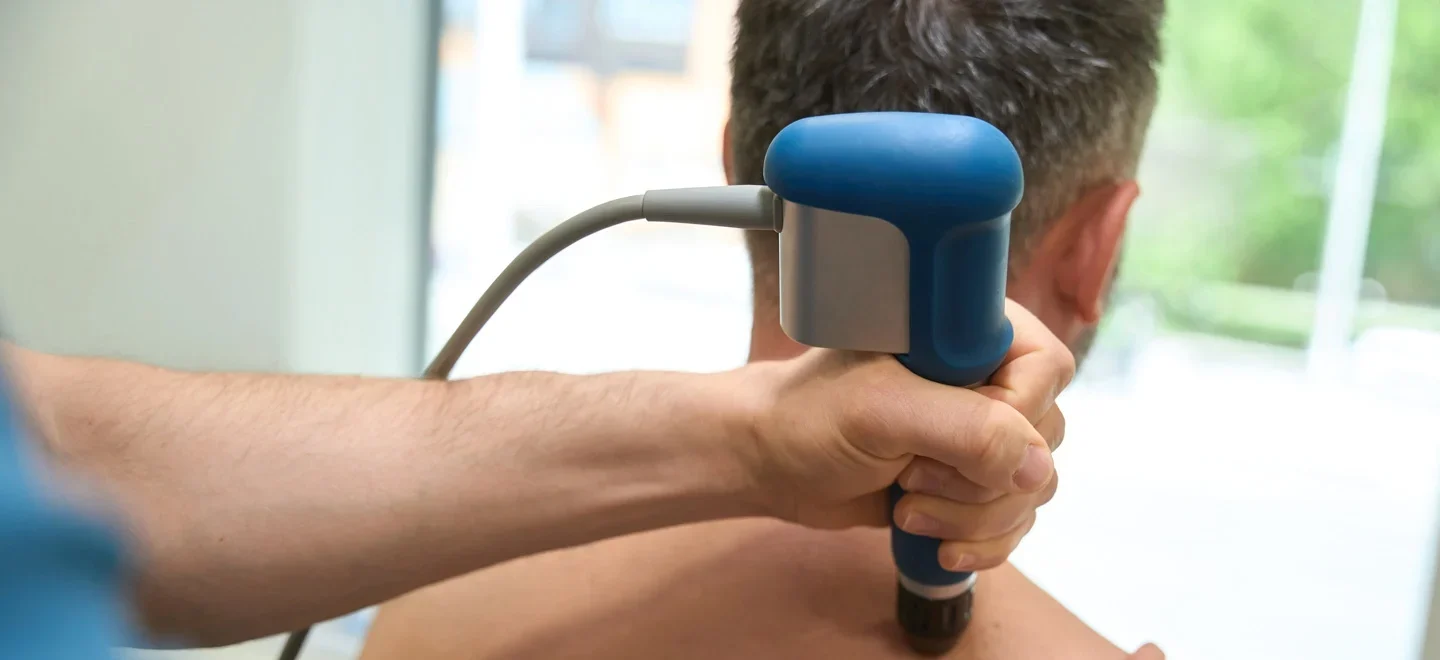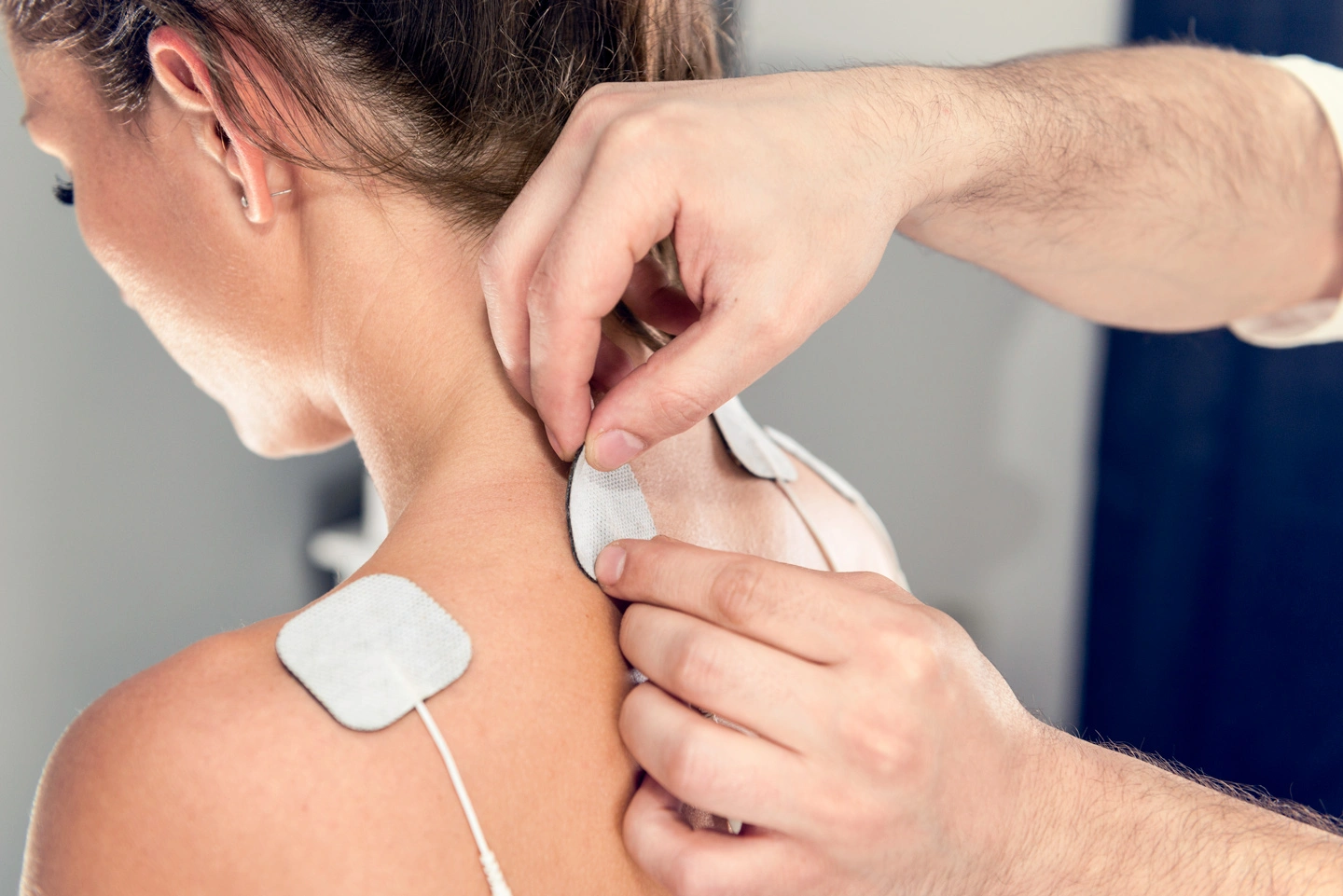What is Laser Therapy?
Laser therapy is a treatment involving the use of a handheld therapeutic device often the size of a flashlight. This laser device delivers precise wavelengths of light into injured tissue to penetrate 2 to 5 centimeters beneath the skin’s surface. Typically, the laser emits a wavelength of 90 milliwatts and 830 nanometers.
Laser treatment utilizes these specific wavelengths of light to interact with the tissue below the skin in order to accelerate the healing process, as well as help reduce pain, inflammation, muscle spasms, and increase functionality.
How Does Laser Therapy Work?
Laser therapy works by converting light energy into biochemical energy. While this might sound a bit confusing at first, think of it as the same way that plants absorb sunlight and convert it into usable energy to grow. With laser therapy, the body converts the wavelengths delivered by the laser into energy that it can use to heal damaged tissue.
The laser is placed either directly on or slightly above the skin at the site of the injury, so that it can penetrate the tissue below. This is typically performed while a patient is sitting on the treatment table, or while they are lying down in a relaxed position. The laser is then gently swept across the skin, directing the laser’s energy into the injured or inflamed area. While this process is pain-free, it is common to experience a soothing, warming sensation in the treated area.
Laser therapy typically lasts anywhere from three to ten minutes, depending on the size of the area being treated. During the treatment, the light energy from the laser stimulates the cells within the tissue itself. Specifically, the wavelengths stimulate:
- The Mitochondria: The “powerhouse of the cell” you heard all about in eighth grade biology. The mitochondria triggers cellular reproduction and growth, meaning that once it’s been stimulated, the injured area experiences an expedited cellular growth.
- The Fibroblast: The light energy provided by lasers stimulates development of fibroblast, the cells in connective tissue that produce collagen and other fibers needed to heal damaged tissue. This leads to faster wound healing and a reduction in recovery time.
- Metabolic Activity: Laser treatment encourages a rush of oxygen-rich blood to the affected area, helping the body to increase immune response and the enzyme count necessary to expedite the healing process.
Together, these reactions catalyze healing in the body, alleviating pain and inflammation, and lessening recovery time. Other notable side effects of laser treatment include:
- Reduced fibrous tissue
- Anti-inflammatory reaction
- Improved joint mobility
- Improved blood circulation
- Increased nerve function – limiting tingling and numbness felt at the site of the injury
Who Can Benefit from Laser Therapy?
As laser therapy is a drug-free and surgery-free treatment, many are turning to its non-invasive properties for relief. This unique therapy is suitable for most individuals suffering from damage or trauma to the soft tissue, including those with medical implants. As laser therapy is a light treatment, those with surgical or medical implants can still experience laser therapy for pain and inflammation relief without fearing they’ll comprise their implants.
Specifically, laser therapy could be beneficial for those currently suffering:
- Cervical spine pain
- Whiplash
- Lumbar spine pain
- Knee pain
- Shoulder pain
- Fibromyalgia
- Arthritis or joint pain
- Stiffness in the joints
- Sciatica
- Carpal tunnel pain
- Muscle spasms
- Chronic headaches or migraines
- Post surgical patients
What Are the Risks of Laser Therapy?
Unlike many traditional pain relief treatment options for the above conditions, laser therapy is effective without the need for narcotics or steroid injections. The wavelengths of laser therapy can safely and gently promote healing in the body by catalyzing the natural series of reactions and expediting the healing process. For this reason, laser therapy has little to no risks involved.
However, as with most treatments that stimulate the tissue, those with cancerous lesions or carcinoma should steer clear of laser therapy as it could trigger unwanted cellular growth. Likewise, pregnant women are not recommended to undergo the treatment, as its effects on unborn children are not yet known.
Otherwise, almost everyone is clear to experience laser therapy for themselves. Just be sure both doctor and patient are wearing protective eyeglasses – direct eye exposure to the wavelengths emitted by lasers could be harmful to the naked eye.
The body is a powerful tool. By unlocking the powerhouse of the cell, along with other high functioning cellular processes, laser therapy stimulates natural healing, pain relief, and anti-inflammatory properties in a much quicker span of time. The time for suffering is over. Contact ChiroCare of Florida today to learn more about our laser therapy services.
Laser therapy is available at our Plantation office. Click to book your appointment now!








